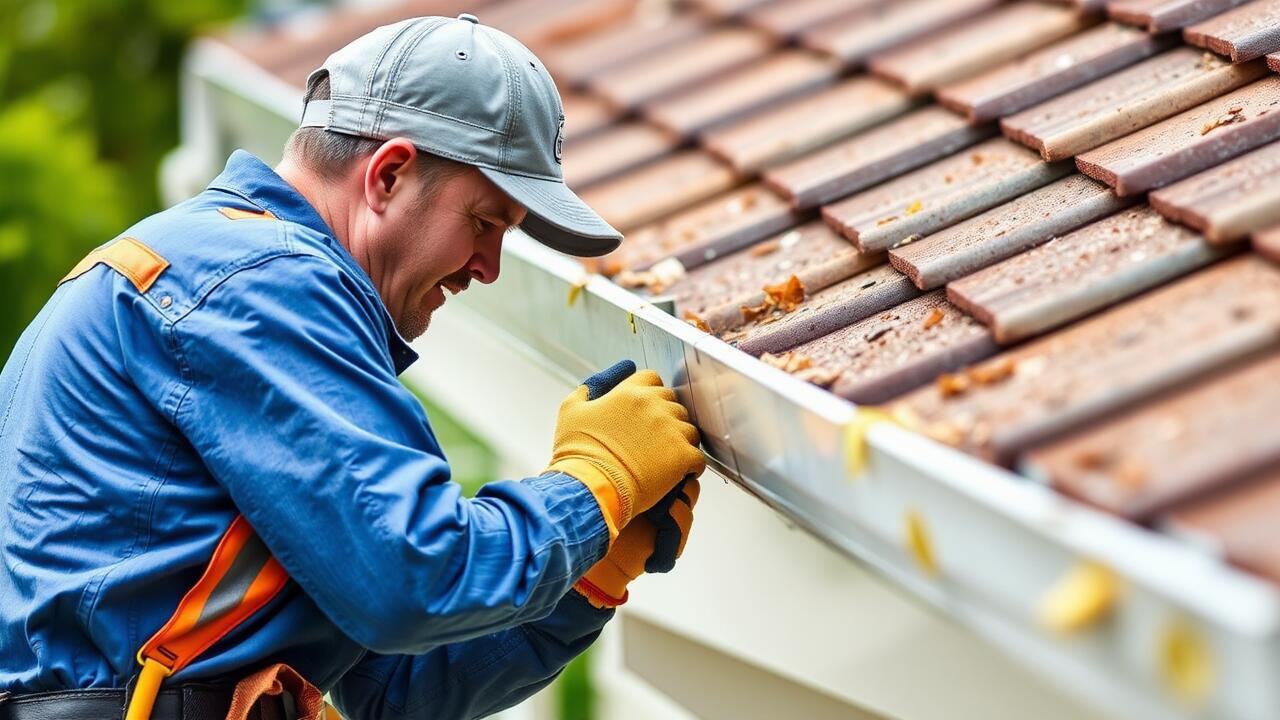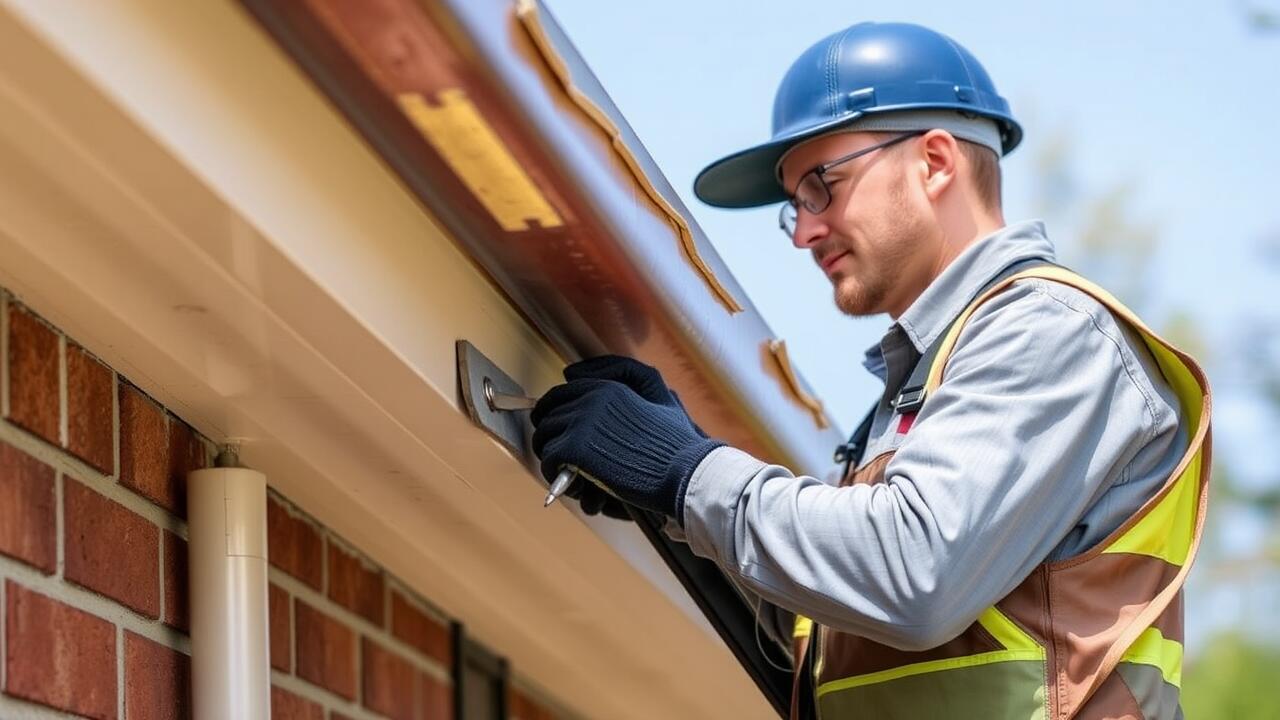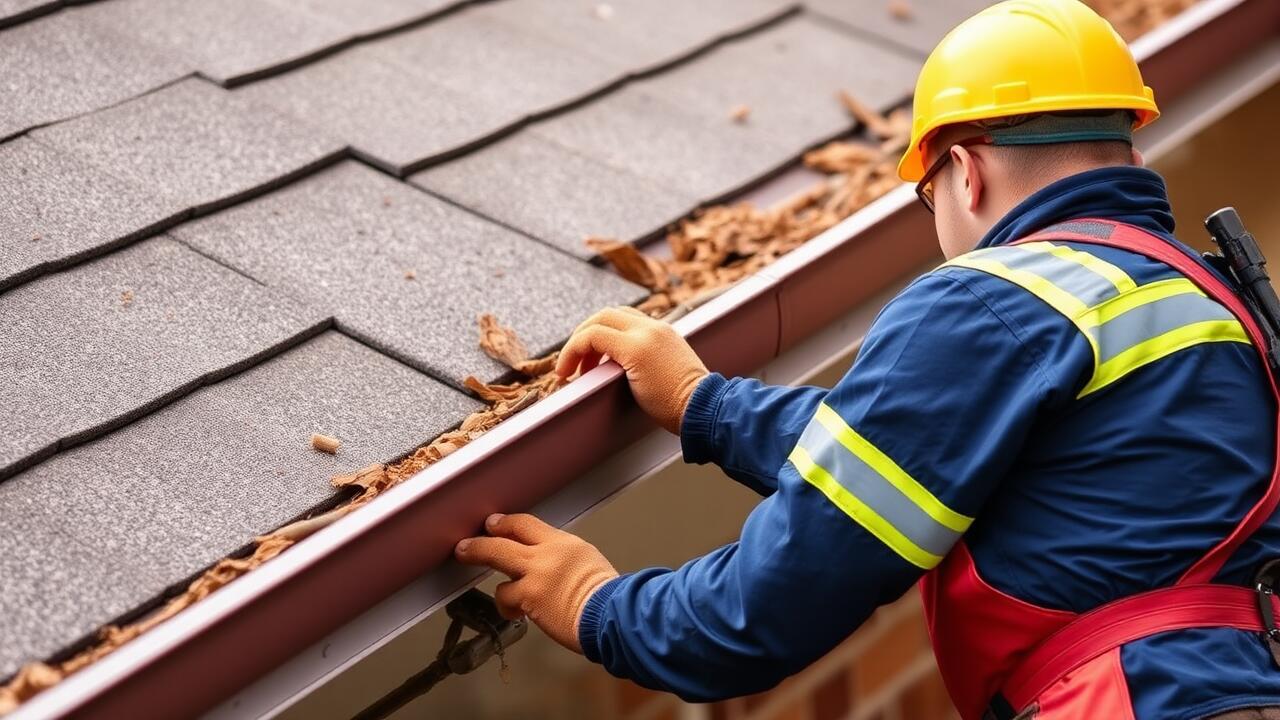
Check Downspouts for Clogs
Inspecting downspouts is a crucial step in addressing leaks in gutters. Clogs can easily form due to accumulated leaves, debris, or even small animals. When water cannot flow freely through the downspout, it may back up and overflow, leading to potential damage to your home's foundation. Regular maintenance helps to keep these channels clear and promotes efficient drainage.
If you identify a blockage, removing it should be your first course of action. Use a plumber's snake or a garden hose to clear debris from the downspout. For persistent clogs, disassembling the downspout might be necessary for thorough cleaning. Keeping downspouts unobstructed not only facilitates proper water flow but also minimizes the risk of extensive gutter repair costs. Many homeowners in need of assistance with this can seek help from professionals offering Gutter Repair Seattle services.
Clearing Blockages and Ensuring Flow
Clogs in downspouts can lead to overflowing gutters and subsequent water damage to your home. Begin by inspecting the downspouts for any debris, such as leaves, twigs, or dirt. A plumber's snake or a stiff wire can help dislodge stubborn blockages. If the blockage remains stubborn, a hose can also be introduced to forcefully push debris through. After clearing the downspouts, observe the water flow during the next rain; it should run freely without pooling or overflowing.
Regular maintenance is vital for keeping gutters functioning correctly. Inspecting and cleaning the gutters at least twice a year will help prevent the buildup of leaves and other materials. Residents interested in professional assistance might consider services like Gutter Repair Queen Anne, Seattle, which specialize in ensuring your gutters are clear and in good condition. Keeping gutters free from blockages not only enhances their lifespan but also protects your property from water damage and mold growth.
Ensure Proper Slope and Alignment
Proper slope and alignment of gutters is crucial for effective water drainage. If the gutters are not sloped correctly, water can pool in certain areas instead of flowing towards the downspouts. A standard slope is about a quarter inch for every ten feet of gutter run. Check the level using a carpenter's level or a string line. Making adjustments may be necessary to ensure that the water flows freely and prevents overflow.
In some instances, existing hangers or mounts may be misaligned, contributing to the slope problem. Inspect these support elements for any signs of wear or displacement. Tightening or replacing them can help realign the gutters for optimal function. For residents seeking professional assistance, services like Gutter Repair Queen Anne, Seattle can provide expert evaluations and modifications to maintain proper gutter alignment.
Assessing Gutter Pitch for Effective Drainage
Gutter pitch is a critical factor in ensuring effective drainage. Ideally, gutters should slope slightly towards the downspouts to facilitate water flow. A common standard is a slope of about a quarter inch for every ten feet. Checking the alignment of your gutters can reveal whether they have shifted or sagged over time, leading to pooling water and potential leaks. This assessment typically requires a level tool to measure the incline accurately and identify any areas that may need adjustment.
In cases where the pitch is inadequate, homeowners may need to readjust the hangers or braces that support the gutters. This adjustment process prevents water accumulation, reducing the risk of leaks and damage to the home's exterior. For those who prefer professional assistance, services like Gutter Repair Queen Anne, Seattle, can provide expertise in evaluating and correcting gutter pitch. Ensuring proper alignment not only boosts the functionality of your gutters but also extends their lifespan, protecting your home from costly water damage.
Reattach Loose Gutters
Loose gutters can lead to extensive water damage if not addressed promptly. To start, inspect the areas where the gutter has detached from the roofline or support brackets. Over time, screws or hangers may become rusted or detached due to normal wear. Carefully reattach the gutters using new screws or appropriate fasteners to ensure a secure fit. It is essential to use materials that can withstand the elements.
For homeowners seeking professional assistance, Gutter Repair Seattle offers reliable solutions for reattaching gutters properly. This expertise ensures that the gutters are not only secured but also aligned correctly. Proper alignment helps facilitate the efficient flow of rainwater, reducing the risk of leaks and spills. Regular maintenance checks on gutter fastenings can prevent future issues and prolong the lifespan of your gutter system.
Securing with the Right Fasteners
Using the right fasteners is crucial for maintaining the integrity of your gutters. Standard screws or bolts are typically recommended to ensure a secure attachment to the fascia board. Avoid using nails, as they can loosen over time, leading to potential leaks. When selecting fasteners, consider materials that resist rust and corrosion, such as stainless steel or galvanized options. This choice will enhance the durability of your gutter system and minimize the likelihood of future repairs.
For residents seeking professional assistance, Gutter Repair Queen Anne, Seattle, can offer expertise in choosing and installing the appropriate fasteners. Properly securing gutters not only prevents leaks but also protects your home from water damage. Regular inspections can help identify any fastener issues early on, allowing for timely interventions before they evolve into more significant problems.
FAQS
What are the common causes of a leaking gutter?
Common causes of a leaking gutter include clogged downspouts, improper slope or alignment, loose sections, and damage to the gutter material itself.
How can I tell if my downspouts are clogged?
You can check for clogs in your downspouts by observing if water is overflowing from the gutters during rain, or by using a garden hose to see if water flows freely through the downspouts.
What is the correct slope for gutters?
The correct slope for gutters is typically a 1-2% pitch, which means a drop of 1/4 inch for every 10 feet of gutter to ensure proper drainage.
What type of fasteners should I use to reattach loose gutters?
To reattach loose gutters, it's recommended to use stainless steel or galvanized screws, as they are resistant to rust and provide a strong hold.
How often should I inspect my gutters for leaks?
It is advisable to inspect your gutters at least twice a year, ideally in the spring and fall, or after any significant storms to catch any potential leaks early.



